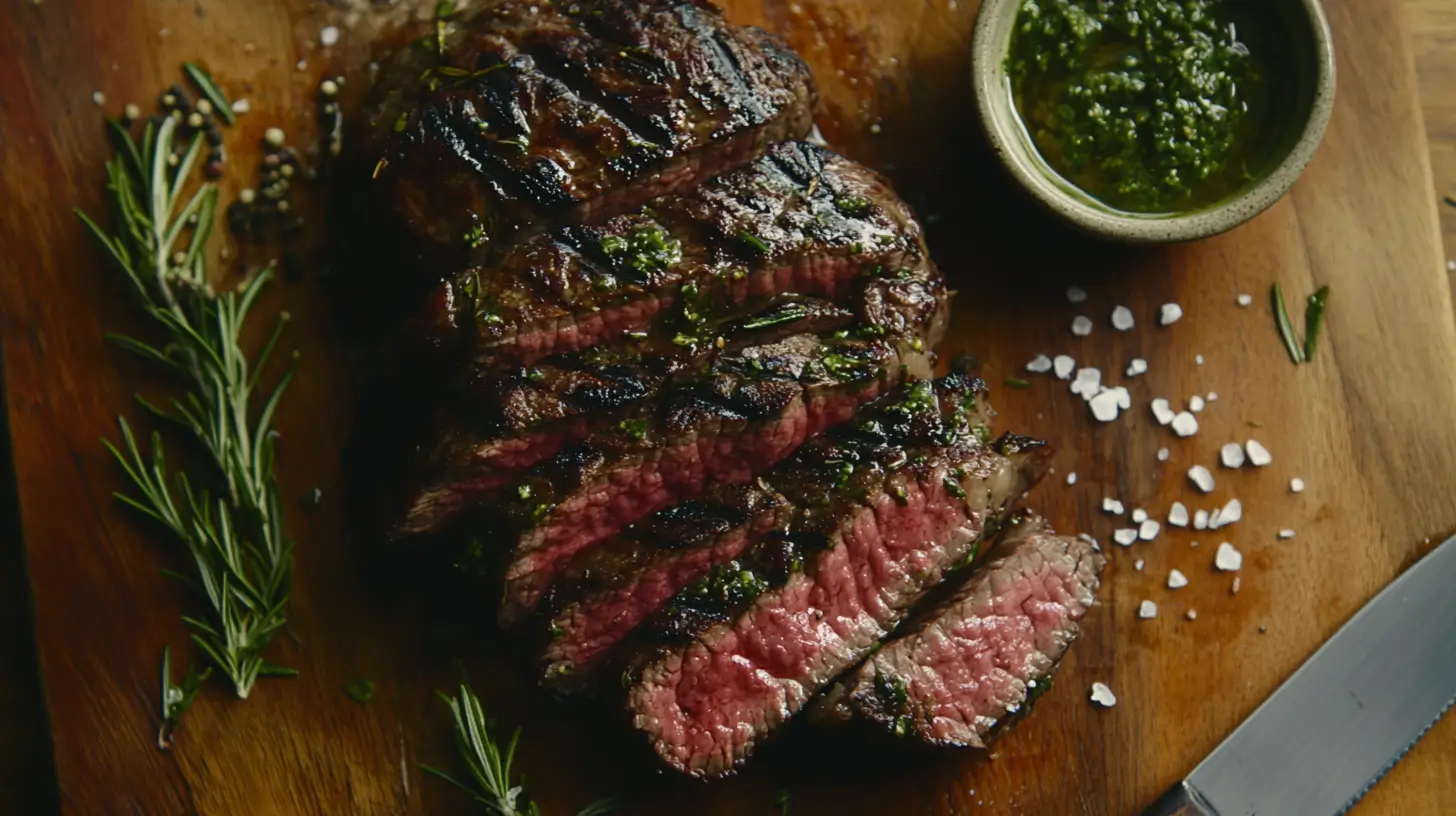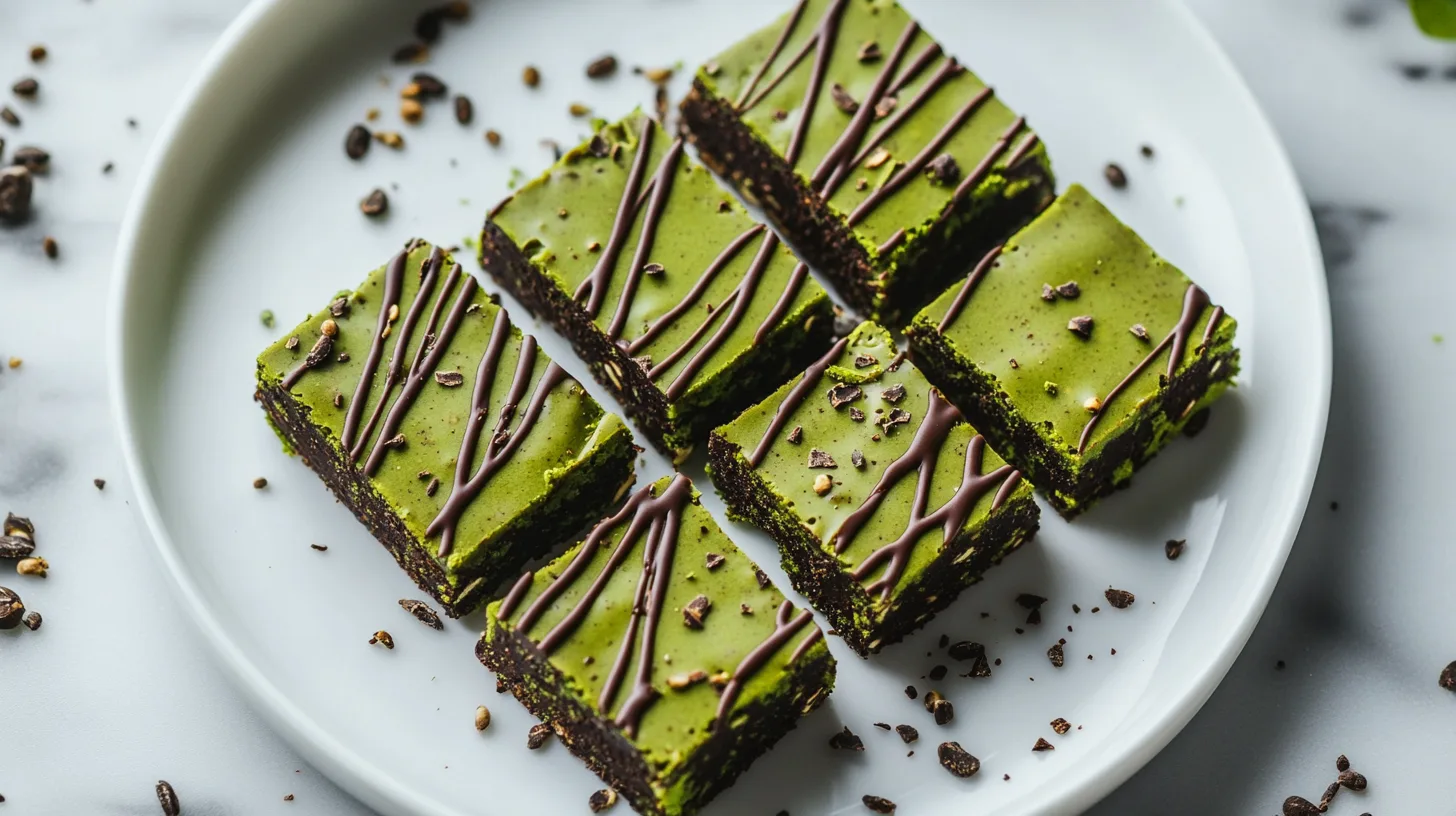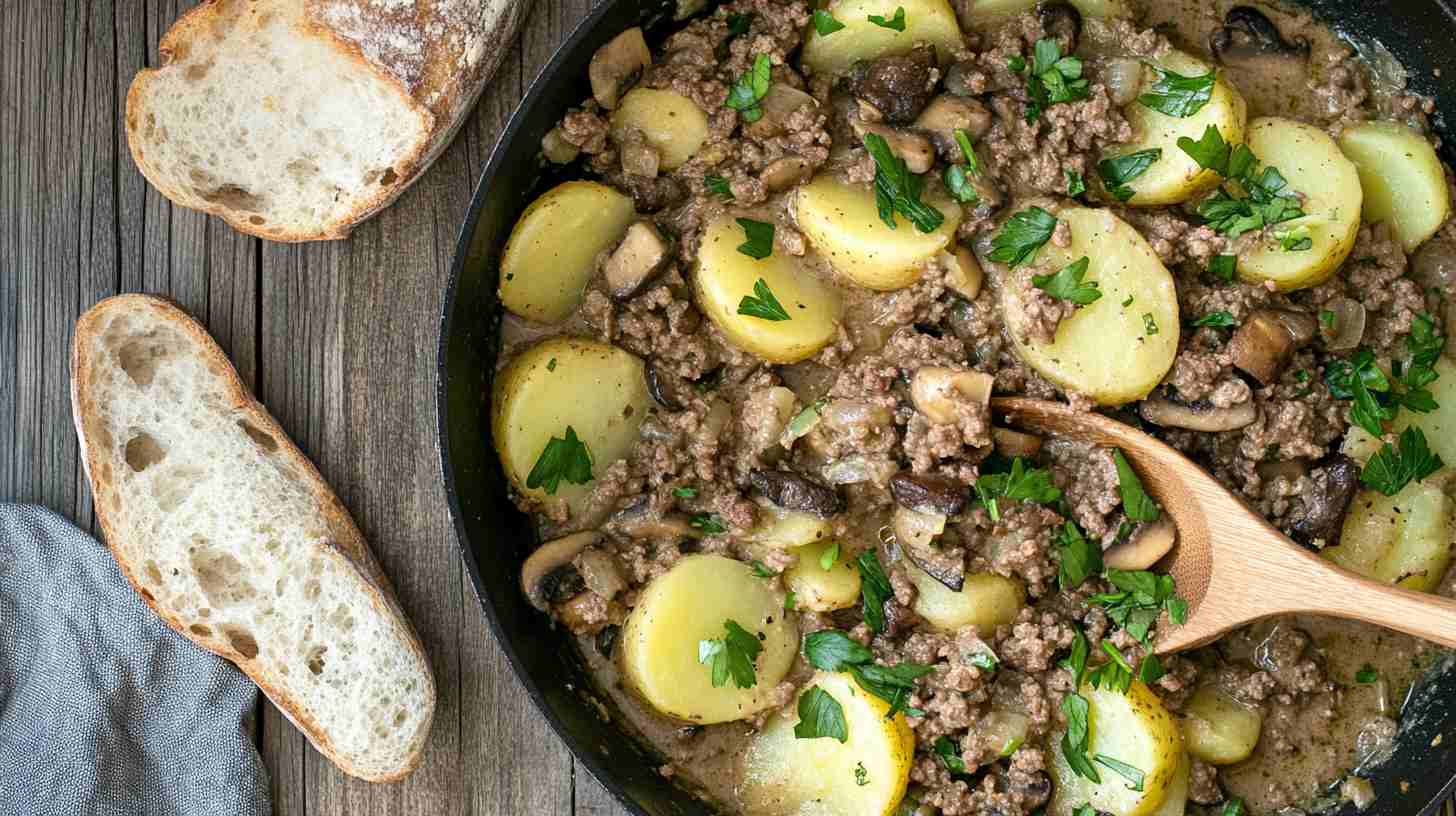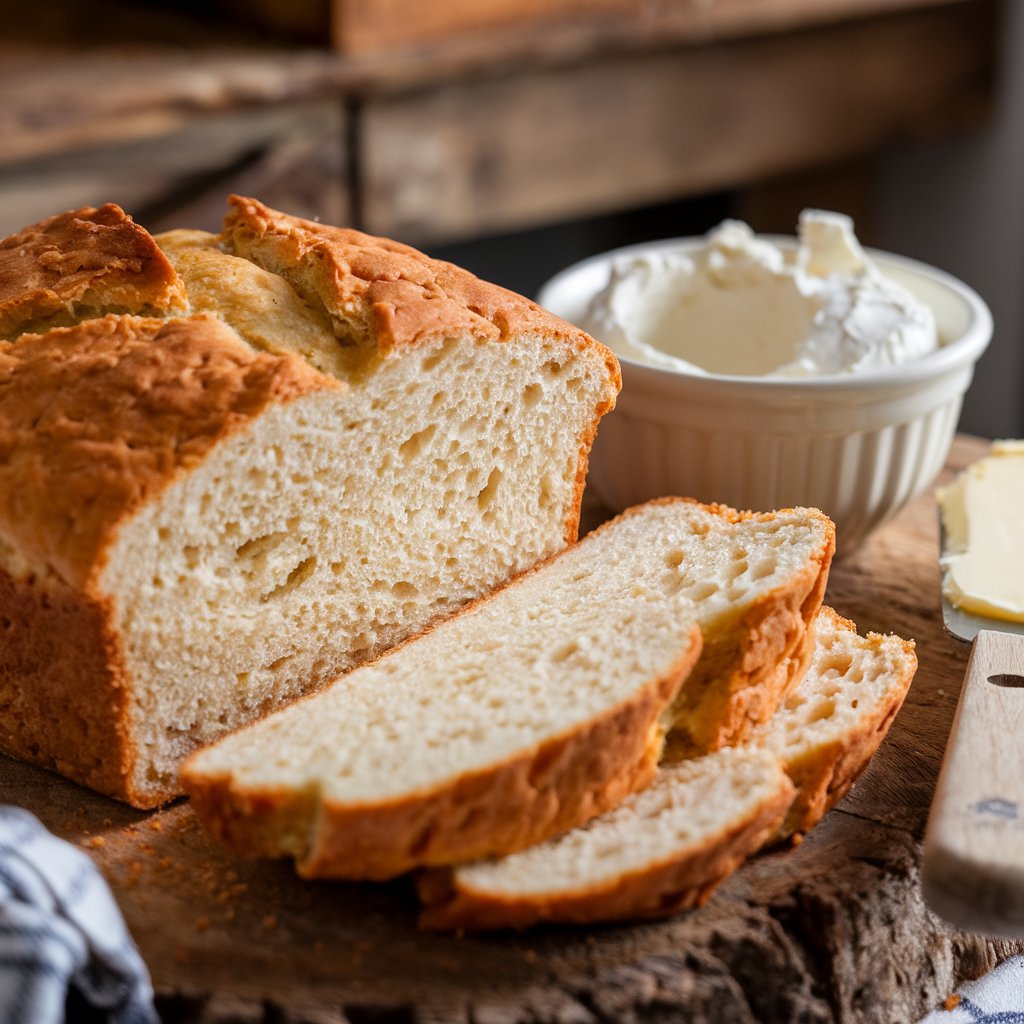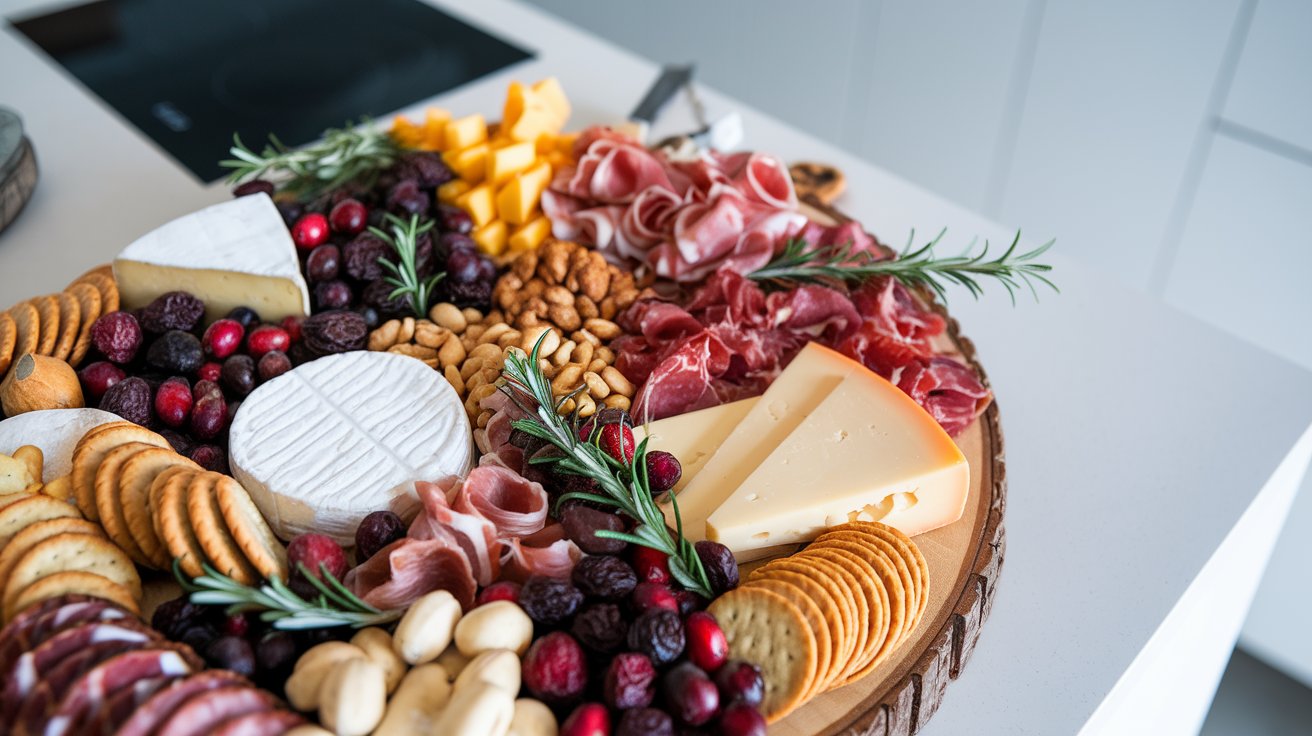Beef loin flat iron steak is one of those hidden culinary gems that often gets overlooked but deserves a spot on every dinner table. Imagine a tender, flavorful steak that’s easy to cook, budget-friendly, and versatile enough for weeknight dinners or fancy weekend meals. Sound like a dream? That’s the magic of the beef loin flat iron steak label, guiding you to the best cuts for every occasion.
Whether you’re a seasoned home cook or just getting started in the kitchen, understanding the beef loin flat iron steak label is key to unlocking its full potential. From knowing what the label means to choosing the best cut and cooking it to perfection, there’s so much to learn—and enjoy.
In this guide, we’ll walk you through everything you need to know, step by step. From its origin and nutritional benefits to expert cooking tips, we’ll make sure you’re fully prepared to create a steak dinner that wows your family and friends. Let’s get started!
What Is a Beef Loin Flat Iron Steak Label and Why It Matters?
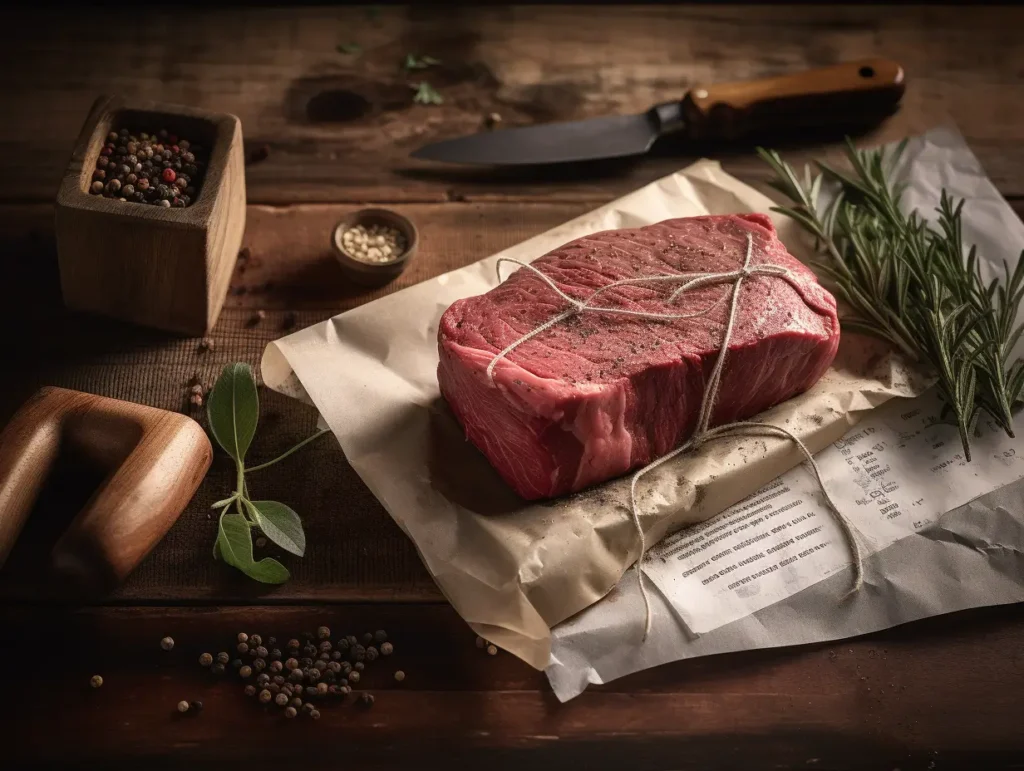
If you’re new to flat iron steak, don’t worry—you’re not alone. While it’s gaining popularity, this cut is still considered a well-kept secret in the culinary world. Flat iron steak is cut from the shoulder blade of the cow, which might surprise you given its tenderness.
What Makes It Special?
- Tenderness: It’s known as the second-most tender steak cut, right after the filet mignon. Thanks to its fine marbling, the meat remains juicy and flavorful when cooked.
- Rich Flavor: The natural marbling not only enhances tenderness but also gives it a robust, beefy flavor that pairs well with marinades and seasonings.
- Affordability: Compared to premium cuts like ribeye or tenderloin, flat iron steak is much more budget-friendly without compromising quality.
Also Known As…
You might find flat iron steak under different names depending on where you shop or travel:
- Oyster Blade Steak in Australia
- Butler’s Steak in the UK
- Marucha Sin Hueso in Spanish-speaking countries
No matter the name, its appeal lies in its versatility and ability to adapt to various cooking styles.
Understanding the Beef Loin Flat Iron Steak Label: A Complete Guide
When you’re choosing beef, understanding the beef loin flat iron steak label is essential to ensure quality. This steak is known for its tenderness and rich marbling, making it a popular choice for grilling or pan-searing. The beef loin flat iron steak label also provides critical information about the cut’s grade, marbling, and whether it’s grass-fed or grain-fed, helping you select the best option for your cooking needs.
What Does the Label Tell You?
- Cut of Meat: Look for “beef loin” or “shoulder blade” to confirm it’s a flat iron steak. Labels like “grass-fed” or “organic” indicate additional details about how the cattle were raised.
- USDA Grading: Meat is graded based on marbling and quality. “Prime” beef offers the best marbling and tenderness, while “Choice” is slightly lower but still high-quality.
- Grass-Fed or Grain-Fed: Grass-fed beef tends to be leaner with a distinct, earthy flavor, while grain-fed beef is richer and more marbled.
Tips for Choosing the Best Steak
- Marbling: The white streaks of fat running through the meat indicate tenderness and flavor. More marbling generally means better quality.
- Color: Look for a deep red color, which indicates freshness. Avoid steaks that appear dull or grayish.
- Packaging: Steaks in vacuum-sealed packaging often stay fresher for longer than those wrapped in plastic trays.
If you’re curious about other ways to enjoy beef, check out these “beef recipes inspired by traditional Hawaiian cuisine” here.
Nutritional Benefits of Beef Loin Flat Iron Steak Label Cuts
Flat iron steak doesn’t just taste good—it’s also packed with nutrients that support a balanced diet. For those looking for high-protein, low-carb options, this cut is a fantastic choice.
Nutritional Breakdown
- Protein Powerhouse: A single 4-ounce serving contains about 23 grams of protein, making it ideal for muscle building and repair.
- Rich in Iron: Flat iron steak is an excellent source of iron, which helps boost energy levels and supports healthy red blood cells.
- Moderate Fat Content: While not as fatty as a ribeye, flat iron steak has enough fat to keep it juicy and flavorful.
How Does It Compare to Other Cuts?
- Flat Iron vs. Ribeye: Ribeye is higher in fat, making it juicier, but flat iron is leaner and more versatile.
- Flat Iron vs. Flank Steak: Flank steak is leaner and tougher, requiring careful slicing, whereas flat iron steak is naturally tender.
With its nutritional profile, flat iron steak is perfect for those who want to enjoy a hearty meal without feeling guilty.
Beef Loin Flat Iron Steak Label vs. Other Popular Beef Cuts
When choosing a steak for dinner, it’s easy to get overwhelmed by the options. To help you decide, here’s a quick comparison of flat iron steak and other popular cuts.
How It Stands Out
- Tenderness: As one of the most tender cuts, flat iron steak rivals premium options like filet mignon at a fraction of the cost.
- Cooking Versatility: Unlike skirt steak or flank steak, which often require marination to tenderize, flat iron steak is naturally tender and can be cooked with minimal preparation.
- Flavor Profile: Its rich, beefy flavor makes it suitable for grilling, searing, or slicing thinly for salads and fajitas.
Side-by-Side Comparison
| Cut | Tenderness | Best Cooking Methods | Flavor |
|---|---|---|---|
| Flat Iron Steak Label | High | Grilling, Pan-Searing | Rich and Beefy |
| Flank Steak | Moderate | Marinating, Grilling | Lean and Robust |
| Skirt Steak | Moderate | Grilling, Stir-Frying | Bold and Fibrous |
| Ribeye Steak | Very High | Grilling, Broiling | Juicy and Fatty |
By understanding these differences, you can confidently choose the right cut for your recipe or occasion.
How to Cook Beef Loin Flat Iron Steak for Perfect Results
Cooking flat iron steak is both simple and satisfying. With the right techniques, you can achieve a perfectly seared crust and a tender, juicy center.
Step-by-Step Cooking Guide
- Preparation
- Remove the steak from the fridge 30 minutes before cooking to allow it to reach room temperature.
- Pat the steak dry with paper towels to ensure a proper sear.
- Season generously with salt and freshly cracked pepper.
- Grilling
- Preheat your grill to medium-high heat (around 400°F).
- Place the steak on the grill and cook for about 4-5 minutes per side for medium-rare.
- Use a meat thermometer to check for an internal temperature of 135°F.
- Pan-Searing
- Heat a heavy skillet (preferably cast iron) over high heat with a tablespoon of oil.
- Sear the steak for 3-4 minutes on each side until a golden-brown crust forms.
- Lower the heat, add a knob of butter, and baste the steak for additional flavor.
- Resting and Slicing
- Let the steak rest for 5-10 minutes to retain its juices.
- Slice thinly against the grain to ensure maximum tenderness.
Pro Cooking Tips
- Always preheat your grill or pan to high heat before adding the steak. This creates the perfect sear.
- Use a meat thermometer to avoid overcooking. For medium-rare, aim for 135°F.
This section gives you a taste of how easy and rewarding it is to cook flat iron steak at home.
The Art of Marination for Beef Loin Flat Iron Steak Label Recipes
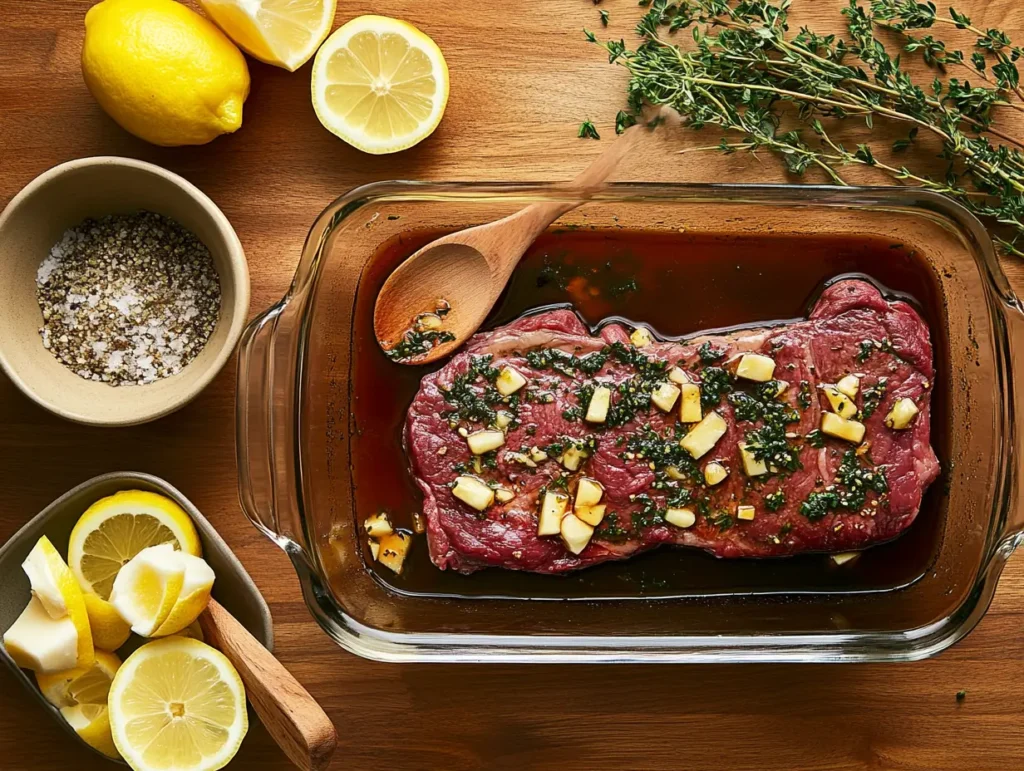
If you’re aiming to take your flat iron steak to the next level, marination is an essential step you shouldn’t skip. While flat iron steak is naturally tender and flavorful, a great marinade works wonders in amplifying its taste and giving it a unique, personalized touch.
Why Marinate?
Marinating isn’t just about adding flavor—it’s also about texture. The acidic components in marinades, such as lemon juice or vinegar, help break down proteins in the steak, making it even more tender. At the same time, oil and spices infuse the meat with deep, savory flavors that elevate its profile.
How to Make a Perfect Marinade
Creating a marinade might sound complicated, but it’s actually quite simple. With just a few pantry staples, you can prepare a marinade that enhances the natural richness of the steak. Here’s a basic recipe:
- Olive Oil: Helps distribute the spices evenly while keeping the meat moist.
- Soy Sauce or Worcestershire Sauce: Adds a savory, umami kick.
- Acidic Elements: Lemon juice, vinegar, or even yogurt tenderize the steak.
- Seasonings: Garlic, onion powder, black pepper, and smoked paprika create a robust flavor profile.
Grilling Beef Loin Flat Iron Steak Label: Expert Tips for Perfection
Grilling is one of the most beloved ways to cook flat iron steak. However, achieving the perfect balance between a smoky charred crust and a juicy interior requires some attention to detail.
Preparing the Grill
Before you begin, ensure your grill is spotless and well-oiled. This step prevents the steak from sticking and helps you achieve those beautiful grill marks that everyone loves. Also, don’t forget to preheat your grill to medium-high heat; the right temperature is critical for even cooking.
Cooking Techniques
- Two-Zone Cooking: Set up your grill with a hot zone and a cooler zone. Start the steak on the hot side for a quick sear, then move it to the cooler side to finish cooking gently.
- Use a Thermometer: While experience helps, a meat thermometer ensures precision. For medium-rare, the steak should reach an internal temperature of 135°F.
- Minimal Flipping: Avoid flipping the steak more than once, as frequent flipping can interfere with the caramelization process.
When you remove the steak from the grill, let it rest for at least 5 minutes. This resting period allows the juices to redistribute evenly throughout the meat.
Alternative Cooking Methods for Beef Loin Flat Iron Steak Label Cuts
While grilling is a classic choice, flat iron steak can shine with other cooking methods as well. Here are some alternatives that work wonderfully, especially if grilling isn’t an option:
Pan-Searing
Pan-searing flat iron steak in a cast-iron skillet is a fantastic method for home cooks. The skillet retains heat well, ensuring a gorgeous crust. Simply heat the pan on high, add a tablespoon of oil, and sear the steak for 3-4 minutes per side. Finish with butter and fresh herbs like thyme or rosemary for extra flavor.
Sous Vide
Sous vide is ideal for those who want precise control over their steak’s doneness. Simply season the steak, vacuum seal it, and cook it in a water bath set to your desired temperature (e.g., 130°F for medium-rare). After sous vide cooking, sear the steak quickly in a hot pan for a perfect crust.
Broiling
Broiling is a quick and convenient method, especially for thin cuts. Preheat the broiler, place the steak on a broiler pan, and cook for 4-6 minutes per side. Keep a close eye on the steak, as broilers can cook unevenly.
Best Side Dishes for Beef Loin Flat Iron Steak Label
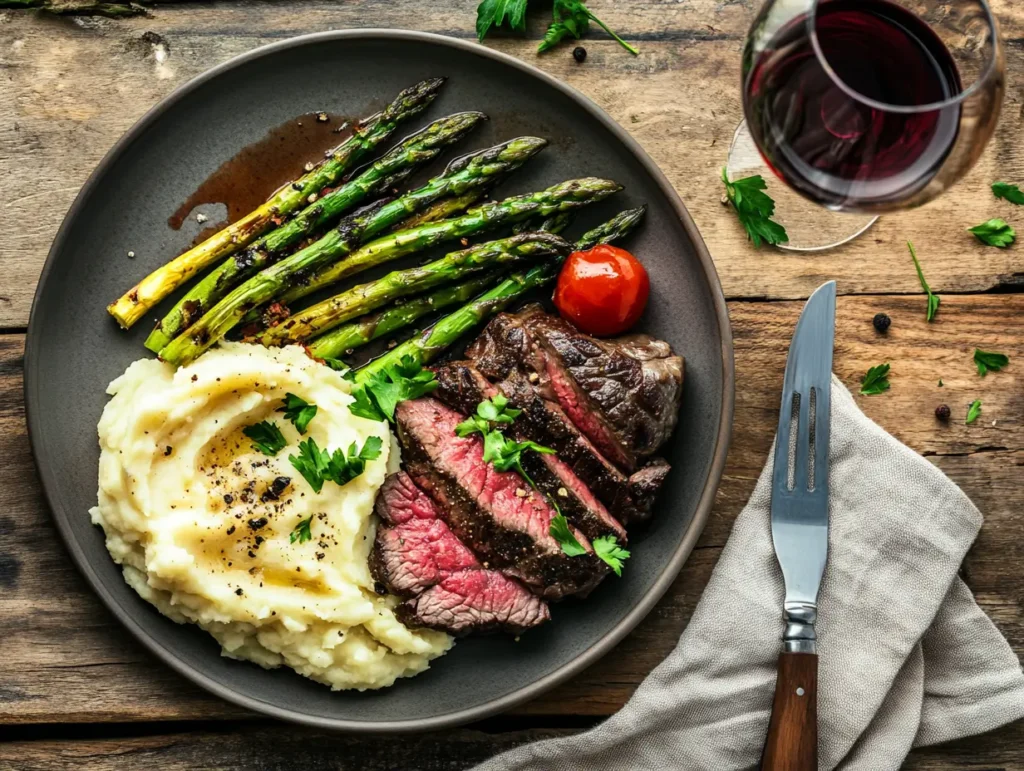
Pairing your flat iron steak with the right side dishes is an essential part of creating a memorable meal. Whether you’re in the mood for something classic or a little more adventurous, there’s a side dish out there that will perfectly complement your steak.
Traditional Pairings for Beef Loin Flat Iron Steak Label Recipes
- Mashed Potatoes: Creamy, buttery mashed potatoes are a timeless choice. The rich, starchy goodness balances the bold flavors of the steak.
- Grilled Vegetables: Bell peppers, zucchini, and asparagus add vibrant color and fresh flavors to your plate.
- Steamed Broccoli: A lighter, healthier option that still pairs beautifully with steak.
Elevated Options to Serve with Beef Loin Flat Iron Steak Label Cuts
- Mushroom Risotto: The creamy texture and earthy flavor of mushroom risotto make it a luxurious pairing.
- Arugula Salad: Tossed with lemon vinaigrette, arugula’s peppery bite is a refreshing contrast to the steak’s richness.
- Sweet Potato Fries: A slightly sweet and crispy side that adds an interesting twist to your meal.
Don’t forget to choose a beverage that enhances the dining experience. A bold red wine like Cabernet Sauvignon or Malbec pairs wonderfully with the steak’s hearty flavors.
Buying Beef Loin Flat Iron Steak: Tips and Tricks
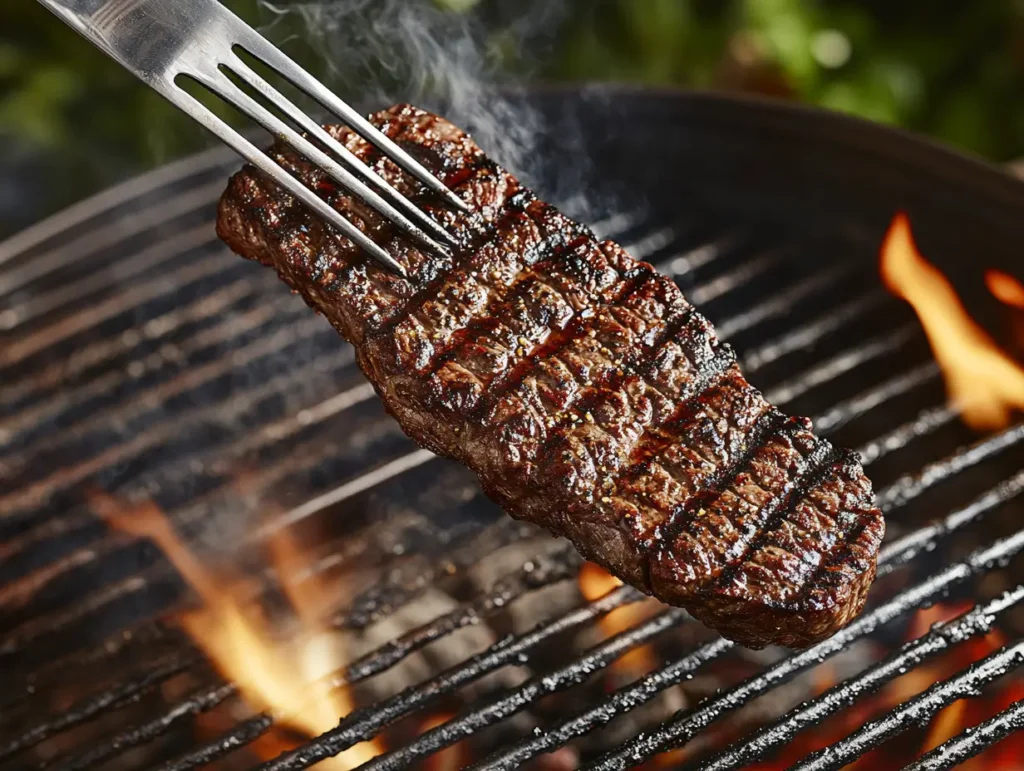
The journey to a perfect steak begins at the butcher shop or grocery store. Knowing how to pick the best cut ensures you’re starting with a high-quality piece of meat.
What to Look For
- Marbling: Look for steaks with even marbling throughout the meat. These white streaks of fat melt during cooking, enhancing flavor and tenderness.
- Color: A vibrant, deep red color is a sign of freshness. Avoid steaks that appear pale or brownish.
- Packaging: Choose vacuum-sealed steaks for longer shelf life and better preservation of flavor.
Grass-Fed vs. Grain-Fed
The debate between grass-fed and grain-fed beef often comes down to personal preference. Grass-fed beef is leaner with a slightly gamier taste, while grain-fed beef is richer and more marbled, offering a juicier bite.
Common Mistakes to Avoid When Cooking Steak
Even seasoned home cooks can make mistakes when preparing flat iron steak. Here’s how to avoid the most common pitfalls:
1. Skipping the Rest Period
When steak is cooked, the juices move toward the center. Cutting into the meat immediately after cooking allows those juices to escape, resulting in a dry steak. Always rest the steak for 5-10 minutes before slicing.
2. Overcooking
Flat iron steak is relatively thin, so it cooks quickly. Keep an eye on the internal temperature with a thermometer to avoid overcooking.
3. Slicing the Wrong Way
The grain of the steak refers to the direction of the muscle fibers. Slicing with the grain makes the meat chewy, so always slice against the grain to ensure maximum tenderness.
4. Underseasoning
Flat iron steak has a strong natural flavor, but it still benefits from a generous seasoning of salt and pepper. Don’t be afraid to season liberally for a flavorful crust.
Restaurant-Style Steak at Home
Finally, if you want to serve flat iron steak that looks and tastes like it came straight out of a high-end restaurant, there are a few simple tricks to follow.
- Use Cast Iron: A cast-iron skillet retains heat well and helps you achieve a professional-level sear.
- Finish with Butter: During the last minute of cooking, add butter, garlic, and fresh herbs to the pan and baste the steak for added richness.
- Presentation Matters: Slice the steak thinly and arrange it on a warm plate. Garnish with fresh parsley or a drizzle of steak sauce for an elegant touch.
Flat iron steak is a true gem in the world of beef cuts. Its tenderness, rich flavor, and versatility make it an excellent choice for any dinner table. Whether you’re grilling it to perfection, marinating it for extra flavor, or pairing it with delicious side dishes, this steak is sure to impress.
With the tips and techniques outlined here, you’re ready to master the art of cooking flat iron steak and create unforgettable meals. So, grab your apron, fire up the grill (or skillet), and let the magic begin.

